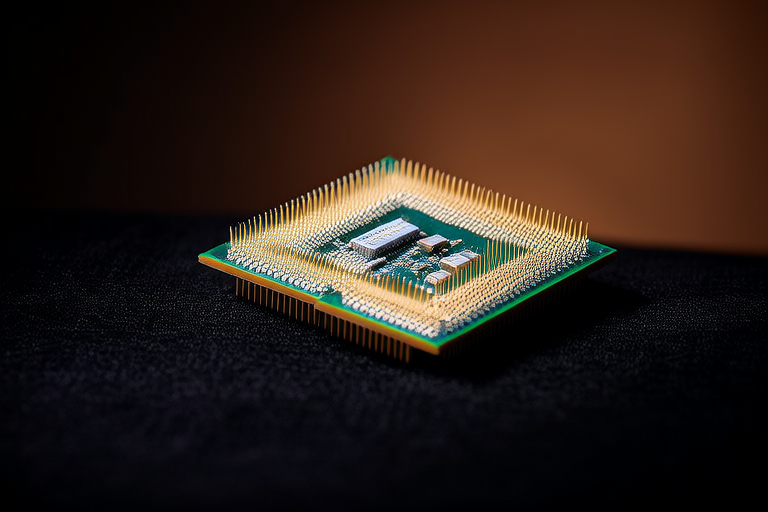The Evolution of CPUs: From Single-Core to Quantum Computing
Introduction
The Central Processing Unit (CPU) is often referred to as the “brain” of a computer. It is the primary component responsible for executing instructions and performing calculations that enable a system to function. CPUs are integral to everything from personal computers and smartphones to data centers and embedded systems. As technology has advanced, so too have CPUs, evolving from simple single-core processors to highly sophisticated multi-core architectures and even paving the way for revolutionary concepts like quantum computing. This article explores the journey of CPUs, highlighting key milestones and innovations that have shaped modern computing.
The Era of Single-Core Processors
In the early days of computing, CPUs were designed with a single processing core, meaning they could execute only one task at a time. These single-core processors operated sequentially, following the von Neumann architecture, where instructions were fetched, decoded, and executed in a linear fashion. Early CPUs, such as the Intel 4004 introduced in 1971, were groundbreaking but limited by their clock speeds and transistor counts.
Despite their simplicity, single-core processors laid the foundation for modern computing. However, their limitations became apparent as software grew more complex and users demanded faster performance. The sequential nature of these processors meant that tasks had to wait in line, creating bottlenecks. Additionally, increasing clock speeds to improve performance led to higher power consumption and heat generation, posing significant engineering challenges.
The Rise of Multi-Core Processors
To overcome the limitations of single-core processors, manufacturers began developing multi-core CPUs. A multi-core processor integrates two or more independent cores on a single chip, enabling parallel processing. This innovation allowed multiple tasks to be executed simultaneously, significantly improving performance and efficiency.
The transition to multi-core processors was driven by the growing demand for faster computation in areas such as gaming, multimedia editing, and scientific simulations. Dual-core processors, like the Intel Core Duo released in 2006, marked the beginning of this shift. Over time, quad-core, hexa-core, and even octa-core processors became commonplace, catering to both consumer and enterprise markets.
Parallel processing not only enhanced speed but also improved multitasking capabilities. Operating systems and applications were optimized to take advantage of multiple cores, distributing workloads more effectively. This shift fundamentally changed how software was designed and executed, setting the stage for further advancements in CPU technology.
Advancements in CPU Technology
The evolution of CPUs has been marked by several technological breakthroughs that have improved their efficiency and performance. One of the most significant trends has been the reduction in transistor size, as predicted by Moore’s Law. Smaller transistors allow more components to be packed into a single chip, increasing computational power while reducing energy consumption.
Increased clock speeds have also played a crucial role in enhancing CPU performance. By executing more instructions per second, higher clock speeds enable faster processing. However, this approach has its limits, as excessive heat generation can lead to instability. To address this, manufacturers have implemented advanced cooling solutions and power optimization techniques.
Hyper-threading is another innovation that has improved CPU efficiency. This technology allows a single physical core to simulate multiple logical cores, enabling better utilization of resources and improved multitasking. Additionally, advancements in manufacturing processes, such as the use of FinFET transistors, have further reduced power leakage and enhanced performance.
Specialized Processing Units
While CPUs remain the backbone of computing, specialized processing units have emerged to handle specific tasks more efficiently. Graphics Processing Units (GPUs), originally designed for rendering images and animations, excel at parallel processing and are now widely used in machine learning, scientific research, and cryptocurrency mining.
Tensor Processing Units (TPUs), developed by Google, are another example of specialized hardware. TPUs are optimized for tensor operations, which are fundamental to deep learning algorithms. By offloading these tasks from traditional CPUs, TPUs enable faster training and inference for artificial intelligence models.
These specialized units complement CPUs by addressing their limitations in handling certain types of workloads. Together, they form a heterogeneous computing environment that maximizes performance and efficiency across a wide range of applications.
The Future: Quantum Computing
As classical CPUs continue to evolve, researchers are exploring entirely new paradigms of computation, with quantum computing representing the next frontier. Unlike classical CPUs, which use bits to represent data as either 0 or 1, quantum computers use qubits, which can exist in multiple states simultaneously due to the principles of superposition and entanglement.
This unique property allows quantum computers to perform complex calculations at unprecedented speeds. For example, they have the potential to solve optimization problems, simulate molecular structures, and break cryptographic codes that are currently infeasible for classical systems. Companies like IBM, Google, and Rigetti are actively developing quantum processors, although practical, large-scale quantum computing remains a work in progress.
While quantum computing holds immense promise, it also presents significant challenges. Building stable qubits, minimizing error rates, and scaling quantum systems are among the hurdles that must be overcome. Nonetheless, the field represents a transformative leap in processing technology, with the potential to revolutionize industries ranging from healthcare to finance.
Conclusion
The evolution of CPUs from single-core processors to the advent of quantum computing is a testament to humanity’s relentless pursuit of innovation. Each milestone, from the introduction of multi-core architectures to the development of specialized processing units, has addressed the growing demands of modern computing. These advancements have not only improved performance and efficiency but also expanded the possibilities of what computers can achieve.
As we look to the future, the challenges of scaling classical CPUs and harnessing the power of quantum computing will continue to drive research and development. While obstacles remain, the opportunities for breakthroughs in processing technology are vast. Whether through incremental improvements or paradigm-shifting innovations, the quest for more powerful and efficient CPUs will undoubtedly shape the trajectory of technology for years to come.


